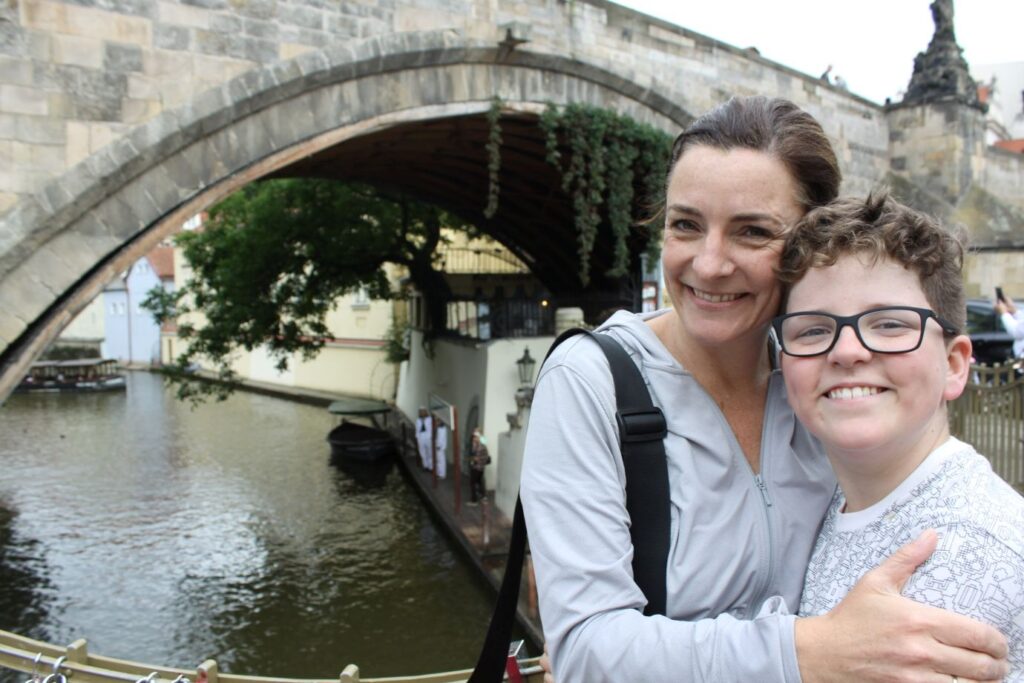My 18-year-old son graduated this week after attending four schools in two years. There were months when I genuinely doubted we’d get him through the HSC. As he walked across that stage, I saw his father’s face: the brilliant, unconventional mind that refused to conform, the creative genius that couldn’t thrive in rigid systems, the stubborn determination that questioned everything.
His father died when he was small. But DNA doesn’t care about tragedy. It expresses itself anyway.
As a CEO, I’ve spent years trying to understand why some of the most talented people struggle inside traditional structures. Watching my son graduate gave me the breakthrough I didn’t know I was searching for.
The problem with “difficult” people
Every Australian workplace has them: the brilliant team members who somehow never quite fit. They challenge processes, ask uncomfortable questions, and demand different management approaches.
In Australia, studies suggest that up to one in five people identify as neurodivergent (Australian Human Rights Commission). Yet Deloitte research shows that only 28 per cent of organisations actively recruit neurodivergent talent.
Too often, we are taught to see these employees as problems to manage rather than assets to unlock. I know because I was doing exactly that as both a parent and a leader.
For years, I blamed myself for my son’s struggles: the school meetings, the behaviour reports, the school refusal, the constant search for environments where he could thrive. I was asking the wrong question: “How do I make him fit the system?” instead of “How do I find or create systems that unlock his unique capabilities?”
The same flawed thinking was shaping my professional life.
The neurodiversity revelation
What neurodiversity research has taught us, and what I witnessed as my late husband’s DNA expressed itself in our son, is that neurodivergent patterns are not bugs in the system. They are features.
- His hyperfocus that looked like defiance? That is the same trait that creates breakthrough innovations.
- His inability to sit still during boring meetings? That is kinesthetic processing, the kind of problem-solving that uncovers insights others overlook.
- His questioning of every rule? That is critical thinking that protects organisations from costly mistakes.
Here in Australia, the social enterprise Australian Spatial Analytics has built its model on this truth. It employs young neurodivergent adults as data analysts, and their pattern-recognition skills consistently outperform industry standards. It proves that when we design the right systems, traits once seen as barriers become competitive advantages.
Research in the Harvard Business Review shows that neurodivergent employees can be up to 30 per cent more productive when roles align with their strengths. Yet most workplaces still rely on rigid hiring and management frameworks that screen out the very minds we need most.
We have been pathologising the exact diversity of thought that drives innovation.
The leadership blind spot costing us talent
As both a CEO and a mother, I realised I had been framing “difficult” employees in the wrong way. I was trying to fix them instead of building environments where they could excel.
Take Sarah*, who worked for me in a former agency role. Brilliant strategist, terrible in traditional meetings. She would interrupt, go off on tangents, and seem distracted. Under old frameworks, she would have been a “performance issue.” But it was the equivalent of trying to run cutting-edge software on outdated hardware. The system simply wasn’t built to support her processing power. Once we upgraded the environment, she became one of our strongest innovators
Sarah went on to lead innovation sessions, host walking meetings, and became one of our most valuable strategic thinkers. The problem was never Sarah. The problem was the system we placed her in.
This is not anecdotal. Deloitte research shows that cognitively diverse teams are 35 per cent more likely to outperform competitors. PwC’s 2023 Workforce Report confirms that organisations embracing diverse thinking models achieve stronger innovation outcomes. Yet many still prioritise “cultural fit” over cognitive contribution, losing exactly the talent they most need.
The perfect storm: Why this matters now
Today, organisations face a perfect storm: pressure to diversify the workforce, an urgent need for innovation, and a constrained labour market. Hiring neurodivergent workers could be part of the solution.
These professionals not only address skills shortages but also bring unique perspectives that drive creative problem-solving. According to Deloitte, embracing neurodiverse talent is no longer just an inclusion effort; it is a competitive strategy.
Yet despite progress in DE&I, neurodivergent people are often overlooked. Globally, rates of unemployment and underemployment remain far higher in this group. In the U.S., an estimated 85 per cent of autistic adults are unemployed, compared with 4.2 per cent of the general population, according to Forbes. Australia faces similar challenges.
Reframing the conversation
This shift requires fundamental changes in how we define human potential:
- From deficit to difference: Ask “What unique value does this person bring?”
- From conformity to capability: Build roles that fit cognitive strengths, rather than forcing people into rigid moulds.
- From standardised to personalised: Recognise that peak performance looks different across different brains.
The Australian Public Service has piloted neurodiversity hiring programs with strong results. Candidates who once struggled in interviews are excelling in roles tailored to their processing styles.
Why female leaders are uniquely positioned
Women leaders, who often have not fitted traditional moulds themselves, are uniquely placed to champion cognitive diversity. We know what it feels like to be told our communication is “too emotional,” our leadership “too collaborative,” our career paths “non-linear.”
Research shows that female leaders are more likely to recognise and develop unconventional talent. Perhaps because we have experienced firsthand how rigid frameworks can overlook real capability
The traits that once made us “difficult” – questioning, seeking diverse perspectives, prioritising psychological safety – are precisely the ones cognitively diverse teams need to thrive.
Practical steps for inclusive leadership
- Audit your hiring practices
Are you filtering for conformity or contribution? Microsoft Australia found that removing traditional interviews increased neurodivergent hiring by 40 per cent. - Redesign performance frameworks
Build multiple pathways to success. Some thrive in written reports, others in presentations, others in collaborative sessions. - Map your team’s cognitive strengths
Learn how each person processes, problem-solves, and communicates. This is not about accommodation; it is about unlocking capability. - Challenge your assumptions
That employee who resists change may be surfacing real risks. The one who struggles in meetings may be your sharpest innovator.
The business case for cognitive diversity
This is not just about inclusion. It is about growth.
Companies like Atlassian report measurable returns from neurodiversity programs, from innovation breakthroughs to stronger engagement.
My son taught me that the traits that made him “difficult” in traditional schools — refusing to accept “because that is how we have always done it”, spotting patterns others miss, challenging authority — are exactly what organisations need to navigate disruption.
What next?
As I watched my son graduate, I thought about all the brilliant minds we are losing because our systems are built for neurotypical processing. Too often, we redesign people to fit the mould, when what we really need to do is redesign the moulds themselves. Innovation does not come from sanding down the edges of unique minds, it comes from building containers big enough to hold them.
The question is not how to make people fit our systems. The question is how to design systems that unlock human potential in all its forms.
For Australian organisations serious about growth, cognitive diversity is not optional. It is essential. Leaders who act on this will gain a competitive edge. Those who do not will keep losing their most innovative talent to environments that do.
My son’s DNA gave him both struggles and superpowers. Our job as leaders is not to erase the struggles. It is to unlock the superpowers.
The years of struggle and heartache have been more than repaid by the absolute joy of seeing him find his path. He is stepping into the world with a way of being and working that is entirely his own, heading toward an incredibly creative professional life. One that his father would have been so proud of.
*Name changed for privacy, and permission from 18-year old-granted!


